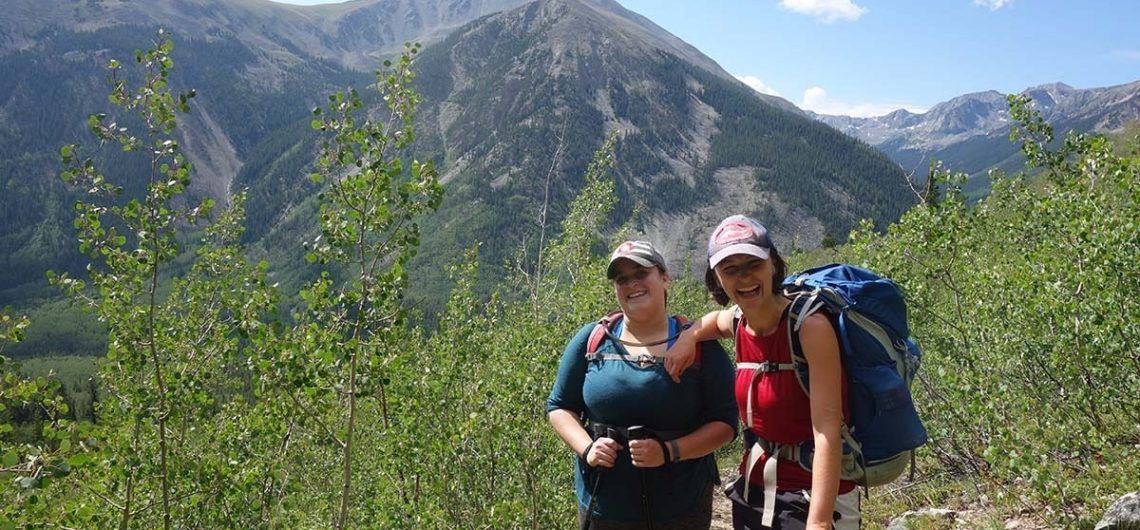Choosing the right hiking shirts for climbing Kilimanjaro, Mount Kenya, and Mount Meru is about balancing moisture management, comfort, and protection. Climbing these mountains in East Africa, including the Rwenzori mountains in Uganda and the active Old Doinyo Lengai volcano, is a remarkable adventure that requires meticulous preparation, particularly when it comes to selecting the right hiking shirts. These iconic African peaks present climbers with a diverse range of temperatures and weather conditions, from the warm, humid rainforests at the base to the cold, windy summit zones. Your hiking shirt, often referred to as a base layer, is the foundation of your clothing system, playing a critical role in keeping you dry, warm, and protected throughout the trek. This comprehensive guide will explore the key considerations for choosing hiking shirts for these climbs, including materials, types, fit, weight, and recommended products, ensuring you are well-equipped for success.
- Research suggests hiking shirts should be made from synthetic fabrics or merino wool for moisture-wicking and warmth, avoiding cotton due to its slow-drying nature.
- It seems likely that a mix of short-sleeve and long-sleeve shirts is best, with long sleeves preferred for sun and wind protection at higher altitudes.
- The evidence leans toward lightweight base layers for versatility across varying temperatures, with snug fits for effective moisture management.
Related: The Recommended Base Layers & Hiking Shirts for Climbing Kilimanjaro
Understanding the Climatic Challenges
Before delving into the specifics, it’s important to understand the climatic challenges posed by Kilimanjaro, Mount Kenya, and Mount Meru. Kilimanjaro, standing at 19,341 feet, takes you through five ecological zones, from tropical rainforests to arctic summit conditions, with temperatures ranging from 80°F at the base to below 20°F at the summit. Mount Kenya, at 17,021 feet, offers similar diversity, while Mount Meru, at 14,980 feet, is slightly less extreme but still demands proper gear due to its varying conditions. These mountains require hiking shirts that can adapt to fluctuating temperatures, sudden rain, and intense UV exposure at higher altitudes.
Your hiking shirt is your first line of defence against these conditions, wicking moisture away from your skin during exertion, drying quickly to prevent chilling during rest stops, and providing warmth when layered with midlayers and outer shells. A poor choice can lead to discomfort, chafing, or even serious risks like hypothermia, especially on summit night when temperatures can drop significantly. Conversely, the right shirt enhances your endurance, reduces fatigue, and makes the climb more enjoyable, given that you’ll be wearing it for 6-10 hours daily over multiple days.
Materials: The Foundation of Your Hiking Shirt
The material of your hiking shirt is the most critical factor, as it determines how well the shirt will manage moisture, regulate temperature, and keep you comfortable. The two primary materials recommended for hiking shirts are synthetic fabrics and merino wool, with cotton firmly avoided.
Synthetic Fabrics (Polyester or Blends)
Synthetic fabrics, typically made from polyester, nylon, acrylic, or spandex blends, are excellent for their moisture-wicking properties, quick-drying capabilities, breathability, and affordability. They are lightweight and durable, making them ideal for active use during trekking. However, a notable disadvantage is that they can retain odours over multiple days, which is a consideration for multi-day treks like those on Kilimanjaro, Mount Kenya, and Mount Meru. Examples include the REI Co-op Lightweight Base Layer and Columbia Omni-Wick Long-Sleeve Top, available at REI and Backcountry.
Merino Wool
Merino wool is a natural fiber known for its odour resistance, breathability, and ability to insulate even when wet. It dries quickly and feels soft against the skin, making it a favourite among hikers for longer treks. The downside is its higher cost compared to synthetics, with prices ranging from $60-$120 depending on the brand and wool micron. Recommended options include the Smartwool Merino 150 Long-Sleeve Base Layer and Icebreaker Merino 200 Oasis Crew, also available at REI and Backcountry.
Why Avoid Cotton?
Cotton is a poor choice for hiking shirts because it absorbs sweat but dries slowly, leaving you cold and clammy. It provides no insulation when wet and can increase the risk of hypothermia in cold conditions, particularly on summit night. The saying “Cotton kills” is often heard in mountain climbing circles, emphasizing its unsuitability for these environments. Save cotton for travel days or relaxing at the lodge, and opt for synthetic or merino wool for your hiking shirts.
Pro Tip: If you’re unsure which material to choose, visit an outdoor retailer like REI or Backcountry to try on both synthetic and merino wool shirts. Feel the fabrics and assess their fit to determine your preference, as both can work well depending on your needs.
Types of Hiking Shirts: Short-Sleeve vs. Long-Sleeve and Beyond
For climbing Kilimanjaro, Mount Kenya, and Mount Meru, it’s advisable to have a mix of short-sleeve and long-sleeve hiking shirts, with additional styles to consider for versatility. Here’s a breakdown:
Short-Sleeve Shirts:
- Ideal for warmer, lower-altitude days, such as the rainforest zones on these mountains. They are lightweight and breathable, perfect for active trekking in hot conditions. However, they offer less protection from the sun and wind, which becomes more critical at higher altitudes.
Long-Sleeve Shirts:
- Essential for higher altitudes where UV exposure is intense and temperatures drop. They provide better coverage for your arms, reducing the need for sunscreen or arm sleeves, and are crucial for summit pushes and colder evenings. Long-sleeve shirts are highly recommended for their protective qualities.
Additional Styles:
- Quarter-Zip or Half-Zip Shirts: These allow for adjustable ventilation, making them versatile for fluctuating temperatures. You can zip up for warmth at the start of a hike or unzip for cooling as you warm up. Examples include the Patagonia Capilene Cool Lightweight Hoodie, available at Backcountry.
- Hooded Shirts: Offer extra protection for your head and neck from sun, wind, and cold. They’re standard for mountaineering and alpine climbing, and options like the Arc’teryx Rho LT Hooded Zip-Neck Top provide premium coverage, available at REI.
- Button-Up Hiking Shirts: Some climbers prefer these for their classic look and versatility, especially during post-climb safaris. Ensure they’re made from moisture-wicking materials, like the Columbia Silver Ridge II Long-Sleeve Shirt, available at REI.
- Sun Hoodies: These provide full-body coverage, including a hood, and are excellent for maximizing sun protection, particularly on exposed slopes.
Recommendation: Pack 1-2 short-sleeve shirts for lower zones and 2-3 long-sleeve shirts for higher altitudes. Include at least one hooded or quarter-zip shirt for added versatility, ensuring you can adapt to the mountain’s conditions.
Fit and Coverage: Ensuring Performance
The fit of your hiking shirt is crucial for its performance, particularly its ability to wick moisture effectively. Base layers should fit snugly but not tightly, allowing the fabric to rest against your skin for efficient moisture transfer. Loose shirts trap air, reducing their effectiveness, while overly tight shirts can restrict movement. Aim for a close-fitting design that conforms to your body without bunching or chafing, especially under backpack straps.
Coverage:
- More coverage is better for these climbs. Long-sleeve shirts are preferable to short-sleeve ones for most of the trek, offering protection from the sun’s intense UV rays, which increase 4% per 1,000 feet of elevation. At 15,000+ feet, sunburn is a real risk, even on cloudy days.
- Avoid tank tops, sleeveless shirts, or sports bras, as they expose your skin to the elements, draining energy better used for acclimatization and recovery.
- Hooded shirts are ideal for protecting your head and neck from sun and wind, especially on exposed ridges. Look for shirts with “monkey thumbs” (thumb holes in the sleeves) to extend coverage to your hands and prevent sleeve creep under jackets.
Weight of Base Layers: Lightweight for Versatility
Base layers come in different weights: lightweight (120-150 gsm), midweight (150-200 gsm), heavyweight, and expedition weight. For Kilimanjaro, Mount Kenya, and Mount Meru, lightweight base layers are the best choice due to their versatility and performance.
Why Lightweight?
- They are highly breathable, wick moisture efficiently, and dry quickly—perfect for the varying conditions on these mountains, from hot rainforest days to cool summit pushes.
- They are versatile for both warm and cool days when layered with midlayers (e.g., fleece) and outer shells (e.g., rain jackets). This makes them suitable for the diverse climates of Kilimanjaro, Mount Kenya, and Mount Meru.
- Heavier base layers (midweight or heavyweight) can cause overheating during active trekking, especially in the sun, leading to excessive sweating that soaks your clothing—a recipe for discomfort and cold when you stop moving.
When to Use Midweight?
- Midweight base layers can be useful for colder evenings at camp or for summit night, particularly on Kilimanjaro and Mount Kenya, where temperatures can drop below freezing. However, they’re less breathable and slower-drying than lightweight options, so use them sparingly.
Note for Mount Meru: Since Mount Meru is less high (14,980 feet) and generally milder than Kilimanjaro or Mount Kenya, with temperatures rarely dropping below zero degrees Celsius even on summit night, you might need slightly less insulation. Lightweight base layers are still ideal, but you can pack fewer midweight options, focusing on versatility for the shorter 3-4 day trek.
Recommended Products and Where to Buy
Based on the criteria above, here are some top recommendations for hiking shirts suitable for Kilimanjaro, Mount Kenya, and Mount Meru, available at trusted retailers like REI and Backcountry:
Synthetic Short-Sleeve T-Shirt:
- Example: REI Co-op Lightweight Base Layer Short-Sleeve Shirt ($39.95)
- Why It’s Great: Affordable, quick-drying, and perfect for warm, lower-altitude days on all three mountains.
Merino Wool Long-Sleeve Base Layer:
- Example: Smartwool Merino 150 Long-Sleeve Base Layer ($85)
- Why It’s Great: Lightweight, odor-resistant, and excellent for multi-day treks, ideal for Kilimanjaro and Mount Kenya’s longer itineraries.
Quarter-Zip Long-Sleeve Shirt:
- Example: Patagonia Capilene Cool Lightweight Hoodie ($59)
- Why It’s Great: Adjustable ventilation, UPF 50+ sun protection, and a hood for extra coverage, versatile for all conditions.
Hooded Long-Sleeve Shirt:
- Example: Arc’teryx Rho LT Hooded Zip-Neck Top ($150)
- Why It’s Great: Premium synthetic fabric, lightweight, and designed for mountaineering, perfect for summit pushes.
Button-Up Hiking Shirt:
- Example: Columbia Silver Ridge II Long-Sleeve Shirt ($50)
- Why It’s Great: Moisture-wicking, breathable, and stylish for post-climb activities like safaris, suitable for all three mountains.
Packing and Practical Tips
To ensure you’re fully prepared, consider the following tips:
- Quantity: Pack 1-2 short-sleeve shirts and 2-3 long-sleeve shirts for a 6-9 day trek on Kilimanjaro or Mount Kenya, and slightly fewer for Mount Meru’s 3-4 day trek. Rotate them to manage odor, especially with synthetic fabrics (merino wool helps here).
- Layering System: Pair your base layers with midlayers (fleece or softshell) and outer shells (waterproof jacket) for full protection against rain and wind, which can occur at any time on these mountains.
- Test Before You Go: Wear your hiking shirts on training hikes to ensure they fit well, feel comfortable, and perform as expected under load with a backpack.
- Care: Rinse shirts in camp if possible using biodegradable soap and dry them overnight. Merino wool can go longer without washing, making it ideal for extended treks.
- Where to Buy: Find these products at REI and Backcountry, where you can also get expert advice and deals on outdoor gear.
With top picks like the Smartwool Merino 150, REI Lightweight Base Layer, or Patagonia Capilene Cool Hoodie, you’ll be equipped to stay dry, comfortable, and focused on reaching the summit.
Invest in quality hiking shirts, test them on training hikes, and pack smartly to ensure they perform when it matters most. With the right preparation, you’ll be ready to tackle these majestic peaks and savor every moment of your climb, whether it’s the Roof of Africa on Kilimanjaro, the scenic routes of Mount Kenya, or the quieter trails of Mount Meru.
![]()

